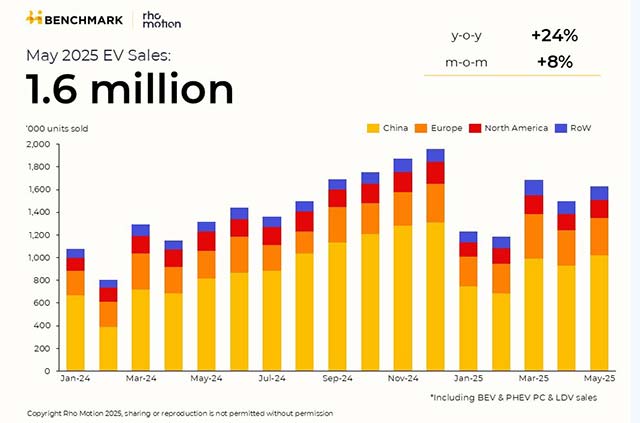Oxford Industries Q1 sales dip amid tariff concerns, revises outlook
Lilly Pulitzer's new logo reveal Credits: Lilly Pulitzer For the first quarter ended on May 3, 2025, Oxford Industries, owner of brands such as Tommy Bahama, Lilly Pulitzer, and Johnny Was among others, reported consolidated net sales of 393 million dollars, a slight decrease compared to the first quarter of fiscal 2024. GAAP earnings per share stood at 1.70 dollars, down from 2.42 dollars in the prior year's first quarter, while adjusted EPS was 1.82 dollars, compared to 2.66 dollars in the previous year. Chairman and CEO Tom Chubb commented on the results, stating, “We were able to deliver sales and adjusted EPS within our guidance ranges for the first quarter despite uncertain tariff and trade dynamics that are significantly impacting our industry and operating landscape.” “Despite the increasing headwinds, we were led by a low double digit increase at Lilly Pulitzer as the brand’s current assortment is resonating strongly with its core consumer, and overall sales were only modestly lower than last year. At the same time, we were able to maintain strong gross margins above 64 percent,” Chubb added. Highlights of Oxford Industries Q1 results Breaking down the sales performance, full-price direct-to-consumer (DTC) sales decreased by 3 percent to 249 million dollars. This included a 1 percent decline in full-price retail sales to 135 million dollars and a 5 percent reduction in e-commerce sales to 114 million dollars. Outlet sales remained comparable at 18 million dollars. In contrast, wholesale sales increased by 4 percent to 92 million dollars compared to the same period last year. The company's GAAP gross margin decreased to 64.2 percent and adjusted gross margin dropped to 64.3 percent compared to the prior-year period. Operating income also declined to 36 million dollars, or 9.2 percent of net sales, while adjusted operating income was 39 million dollars, or 9.8 percent of net sales. Oxford Industries also declared a quarterly cash dividend of 69 cents per share, payable on August 1, 2025, to shareholders of record as of July 18, 2025. The company has a consistent history of paying dividends every quarter since its public listing in 1960. Oxford Industries adjusts sales and EPS outlook Looking ahead, the company revised its sales and EPS guidance for fiscal 2025, ending January 31, 2026 and now anticipates net sales in the range of 1.475 billion dollars to 1.515 billion dollars, compared to 1.52 billion dollars in fiscal 2024. GAAP EPS is projected between 2.28 dollars and 2.68 dollars, while adjusted EPS is expected to be between 2.80 dollars and 3.20 dollars. The revised fiscal 2025 EPS guidance includes an estimated 40 million dollars in additional tariff costs, equivalent to 2 dollars per share after tax. For the second quarter of fiscal 2025, the company expects net sales to be between 395 million dollars and 415 million dollars. GAAP EPS is forecast to be between 92 cents and 1.12 dollars, with adjusted EPS between 1.05 dollars and 1.25 dollars. The second quarter guidance incorporates 15 million dollars in additional tariff costs, or 75 cents per share after tax.
For the first quarter ended on May 3, 2025, Oxford Industries, owner of brands such as Tommy Bahama, Lilly Pulitzer, and Johnny Was among others, reported consolidated net sales of 393 million dollars, a slight decrease compared to the first quarter of fiscal 2024.
GAAP earnings per share stood at 1.70 dollars, down from 2.42 dollars in the prior year's first quarter, while adjusted EPS was 1.82 dollars, compared to 2.66 dollars in the previous year.
Chairman and CEO Tom Chubb commented on the results, stating, “We were able to deliver sales and adjusted EPS within our guidance ranges for the first quarter despite uncertain tariff and trade dynamics that are significantly impacting our industry and operating landscape.”
“Despite the increasing headwinds, we were led by a low double digit increase at Lilly Pulitzer as the brand’s current assortment is resonating strongly with its core consumer, and overall sales were only modestly lower than last year. At the same time, we were able to maintain strong gross margins above 64 percent,” Chubb added.
Highlights of Oxford Industries Q1 results
Breaking down the sales performance, full-price direct-to-consumer (DTC) sales decreased by 3 percent to 249 million dollars. This included a 1 percent decline in full-price retail sales to 135 million dollars and a 5 percent reduction in e-commerce sales to 114 million dollars. Outlet sales remained comparable at 18 million dollars. In contrast, wholesale sales increased by 4 percent to 92 million dollars compared to the same period last year.
The company's GAAP gross margin decreased to 64.2 percent and adjusted gross margin dropped to 64.3 percent compared to the prior-year period. Operating income also declined to 36 million dollars, or 9.2 percent of net sales, while adjusted operating income was 39 million dollars, or 9.8 percent of net sales.
Oxford Industries also declared a quarterly cash dividend of 69 cents per share, payable on August 1, 2025, to shareholders of record as of July 18, 2025. The company has a consistent history of paying dividends every quarter since its public listing in 1960.
Oxford Industries adjusts sales and EPS outlook
Looking ahead, the company revised its sales and EPS guidance for fiscal 2025, ending January 31, 2026 and now anticipates net sales in the range of 1.475 billion dollars to 1.515 billion dollars, compared to 1.52 billion dollars in fiscal 2024.
GAAP EPS is projected between 2.28 dollars and 2.68 dollars, while adjusted EPS is expected to be between 2.80 dollars and 3.20 dollars. The revised fiscal 2025 EPS guidance includes an estimated 40 million dollars in additional tariff costs, equivalent to 2 dollars per share after tax.
For the second quarter of fiscal 2025, the company expects net sales to be between 395 million dollars and 415 million dollars. GAAP EPS is forecast to be between 92 cents and 1.12 dollars, with adjusted EPS between 1.05 dollars and 1.25 dollars. The second quarter guidance incorporates 15 million dollars in additional tariff costs, or 75 cents per share after tax.
















































































































































